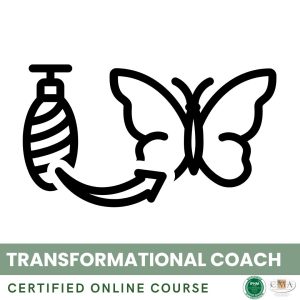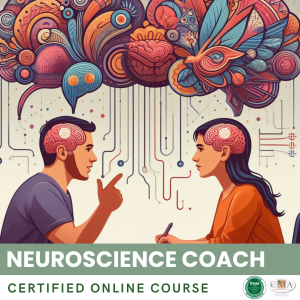After exploring the principles of non-violent communication, it is essential to delve into the techniques of active listening and empathy, which are at the heart of any helping relationship and any healing process. Active listening is a relational skill that involves being fully present for another person, offering them a compassionate attention, and making an effort to understand their subjective experiences, without judgment or hasty interpretation. Empathy, on the other hand, is the ability to put oneself in the other person’s shoes, feel their emotions, and grasp their point of view, while maintaining a certain emotional distance. As a Spiritual Healing Coach, mastering these techniques is crucial to create a space of trust and safety, where our clients can freely explore their inner world and access their deepest resources.
Active listening rests on several specific attitudes and verbal and non-verbal techniques. First, it involves adopting a stance of openness and receptiveness, putting aside our personal concerns and prejudices, to be fully available for the other. This implies suspending our judgment, silencing our inner dialogue and resisting the temptation to give advice or share our own experiences. It’s about offering the other person an unbiased and welcoming space, where they can express their experience freely, without fear of criticism, interruption, or direction.
At the non-verbal level, active listening translates into an open and committed body posture, gentle and sustained eye contact, nodding, and facial expressions that reflect our interest and understanding. It also involves adjusting our pace to that of our interlocutor, respecting their silences and giving them time to formulate their thoughts, without rushing or anticipating them. Sometimes, a simple attentive silence can be more valuable than a thousand words, allowing the other to become aware of their experiences and to find their own answers.
At the verbal level, active listening relies on reflection and paraphrasing techniques, which involve giving back to the other what we have understood from their message, without adding our interpretation. For example, if a client tells us, “I’ve been feeling completely lost and discouraged since I lost my job”, we could paraphrase by saying, “If I understand correctly, this job loss has left you in deep distress and you feel like you’ve lost your bearings”. This rephrasing allows us to verify our understanding, to show the other person that they’ve been heard, and to encourage them to delve deeper into their experiences. It acts as a compassionate mirror that helps the person clarify their thoughts and emotions, and to feel validated in their experience.
Empathy, on the other hand, goes beyond simple intellectual understanding, involving an emotional resonance with the other person’s experiences. It is about walking in their shoes, immersing ourselves in their subjective world, and resonating with their emotions, while maintaining an internal distance that allows us not to be overwhelmed by them. This appropriate empathetic distance is essential to offer the other person a stable and reassuring support, without losing our grounding and our clarity. It allows us to receive intense emotions from the other with calm and kindness, without being destabilized or tempted to flee or judge them.
To develop our empathy, it’s important to cultivate our self-awareness and our emotional intelligence. The more in touch we are with our own emotions and needs, the more capable we are of recognizing and legitimizing those of others. It involves learning to welcome our own vulnerability with gentleness and compassion, to offer this same quality of presence to our clients. Practices such as meditation, introspective writing, or personal therapy can help us deepen our self-knowledge and expand our emotional palette.
It is also important to familiarize ourselves with the different forms of empathy and to know how to use them appropriately. We generally distinguish three types of empathy: emotional empathy, which involves feeling the other person’s emotions through contagion; cognitive empathy, which involves understanding the other person’s point of view by putting ourselves in their place; and compassionate empathy, which involves being touched by the other person’s suffering and experiencing the desire to help them. Each of these forms of empathy has its place in the helping relationship, depending on the context and the client’s needs.
For example, when faced with a crying client who has just lost a loved one, emotional empathy can be invaluable in offering them a warm and comforting presence, showing them that we are touched by their pain. When dealing with an angry client who feels misunderstood and rejected, cognitive empathy can be useful in trying to understand their perspective and the reasons for their anger, without judging or criticizing them. And when dealing with a desperate client who has lost the will to live, compassionate empathy can be lifesaving, by showing our deep concern and desire to help them find reasons to hope again.
Of course, empathy doesn’t mean that we have to agree with everything the client says or does, nor does it mean that we have to condone destructive or illegal behaviors. It is important to set clear and compassionate boundaries when necessary, while maintaining an attitude of respect and non-judgment. Empathy doesn’t consist in telling the other what they want to hear, but in helping them clarify their deep needs and find healthy and ethical ways to meet those needs, in keeping with their values and integrity.
As a Spiritual Healing Coach, we can utilize active listening and empathy techniques throughout our accompaniment, adapting them to the various stages of the healing process. At the beginning of the relationship, active listening and empathy enable us to create a climate of trust and safety, by showing our client that they are welcomed and respected in their entirety. They help us establish a genuine and warm connection, fostering openness and engagement in the therapeutic process.
Over the sessions, active listening and empathy allow us to accompany our client in exploring their inner world, helping them to put words to their feelings, clarify their needs, and identify their resources. They provide us with valuable keys to understanding how to adapt our interventions and tool suggestions, according to the uniqueness of each individual. By reflecting back our client’s own words and emotions, we help them gain self-awareness and develop their internal clarity.
Finally, active listening and empathy are essential to support our client in difficult times and celebrate their victories. They enable us to validate their efforts and progress, normalize their doubts and relapses, and maintain a positive and encouraging vision of their journey. By being fully present for our client, with deep listening and sincere empathy, we provide them with a compassionate mirror that helps them welcome themselves with more gentleness and compassion, and to dare to take new steps toward healing.
Of course, mastering active listening and empathy techniques is an art that we nurture throughout our lives, through practice, supervision, and self-work. It is important to remain humble andattentive to our own limits, to know when to pass the baton when we are overwhelmed, and to take care of ourselves to be able to offer a quality presence to our clients. By cultivating authentic active listening and empathy, we lay the foundation for a deeply human and transformative accompaniment that reveals the unique potential of each being and invites them to spread their wings toward a freer and more fulfilled life.
Key Takeaways:
– Active listening and empathy are essential skills for any Spiritual Healing Coach, allowing them to create a safe and trusting environment for the client.
– Active listening involves an attitude of openness, non-judgment, and availability, as well as verbal (paraphrasing) and non-verbal (posture, eye contact) techniques to demonstrate our responsiveness.
– Empathy is the ability to put oneself in the other’s shoes and feel their emotions, while maintaining the right distance. It requires a good knowledge of oneself and one’s own emotions.
– There are 3 forms of empathy: emotional (feeling the other’s emotions), cognitive (understanding their point of view) and compassionate (being touched by their suffering and wanting to help).
– Empathy does not mean accepting everything but kindly setting limits if needed, in respect and non-judgment.
– Active listening and empathy are used at all stages of coaching to build the relationship, explore the client’s inner world, help them understand themselves, and support them in difficult times as well as in victories.
– These skills require lifelong learning from the coach, who must remain humble, aware of their limitations, and take care of themselves in order to offer a quality presence.
👉 To download docx (Editable) file click here : Click here
👉 To download PDF file click here : Click here
👉 To download MP3 file click here : Click here






